Complete Solutions to Exercise of chapter ISOMERISM of Class 11 book with complete answers and questions
| Class 11 | CHEMISTRY |
| Chapter | ISOMERISM |
| CENGAGE CHEMISTRY | Exercise |
| Number Of Questions | 19 |
| Academic Year | 2023-24 |
`0.90 gm` of an organic compound `C_(4)H_(10)O_(2) (A)` when treated with sodium gives `224 ml` of hydrogen at `NTP`. Compound (A) can be separated into fraction (B) and
(C ), by crystallisation of which the fraction (B) is resolved into isomers (D) and (E ). Write down the structural formula of (A) to (E ) with proper reasoning.05:54View SolutionWrite down the structures of close homologues of heptane having one quaternary `C` atom in their molecule and the other having two tertiary carbon atoms.
06:59View SolutionAn alkance (A) `C_(5)H_(12)` on chlorination at `300^(@)C` gives a mixtrue of four different monochlorinated derivatives `(B), (C ), (D)`, and `(E )`. Two of these derivatives give the same stable alkene `(F)` on dehydrohalogenation. On oxidation with hot alkaline `KMnO_(4)` followed by acidification, `(F)` gives two products `(G) and (H)`. Give the structrues of `(A) t o (H)` with proper reasoning.
04:56View SolutionWhich alkane, having a molecular weight of `86`, will form only two monobromo alkanes?
07:16View SolutionA hydrocarbon `(A)` was found to have vapour density `36`. If forms only a single monochloro substitution product. Suggest `(A)`.
06:30View SolutionWrite the appropriate structural formule for:
a. A cyclic molecule that is a consitutional isomer of cyclohexane
b. Molecules with the formula `C_(6)H_(12)` that contain one ring and are enantiomers of each other.
c. Molecules with formula `C_(6)H_(12)` that contian one ring and are diastereomers of each other.
d. Molecules with formula `C_(6)H_(12)` that contain no ring and are enantiomers of each other.
e. Molecules with formula `C_(6)H_(12)` that contain no ring and are diastereomers of each other.04:24View SolutionThere are four dimethylcyclopropane isomers.
a. Write the three-dimensional formulas for these isomers.
b. Which of these isomers is chiral?
c. If a mixtrue consisting of `1 mol` of each of these isomers is subjected to simple gas chromatography, how many fractions would be obtained and how many compounds each fraction will have?
d. How many of these fractions would be optically active?03:01View SolutionWhich of the follwing objects listed below possess a plane of symmetry and are, therfore, achiral?
a. A hammer
b. A car
c. A woodscrew
d. An ear
e. A screwdriver
f. A tennis shoe
g. A golf club
h. A baseball bat02:25View SolutionAssign `(R ) or (S)` designations to each of the following compounds
a.
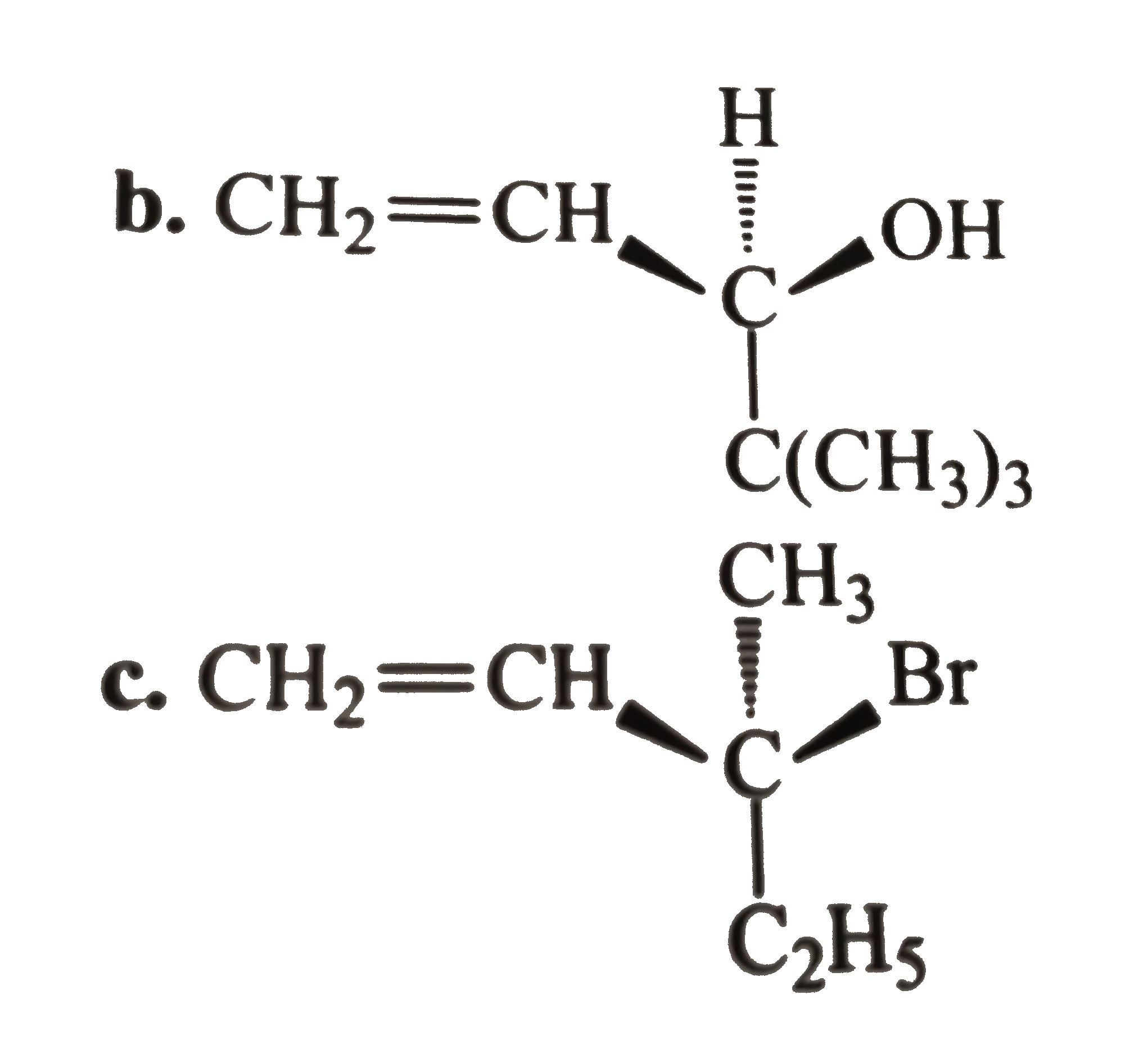 03:57View Solution
03:57View SolutionConsider the following pair of structrue and tell whether they represent enantiomer or two molecules of the same compound in different oreintation.
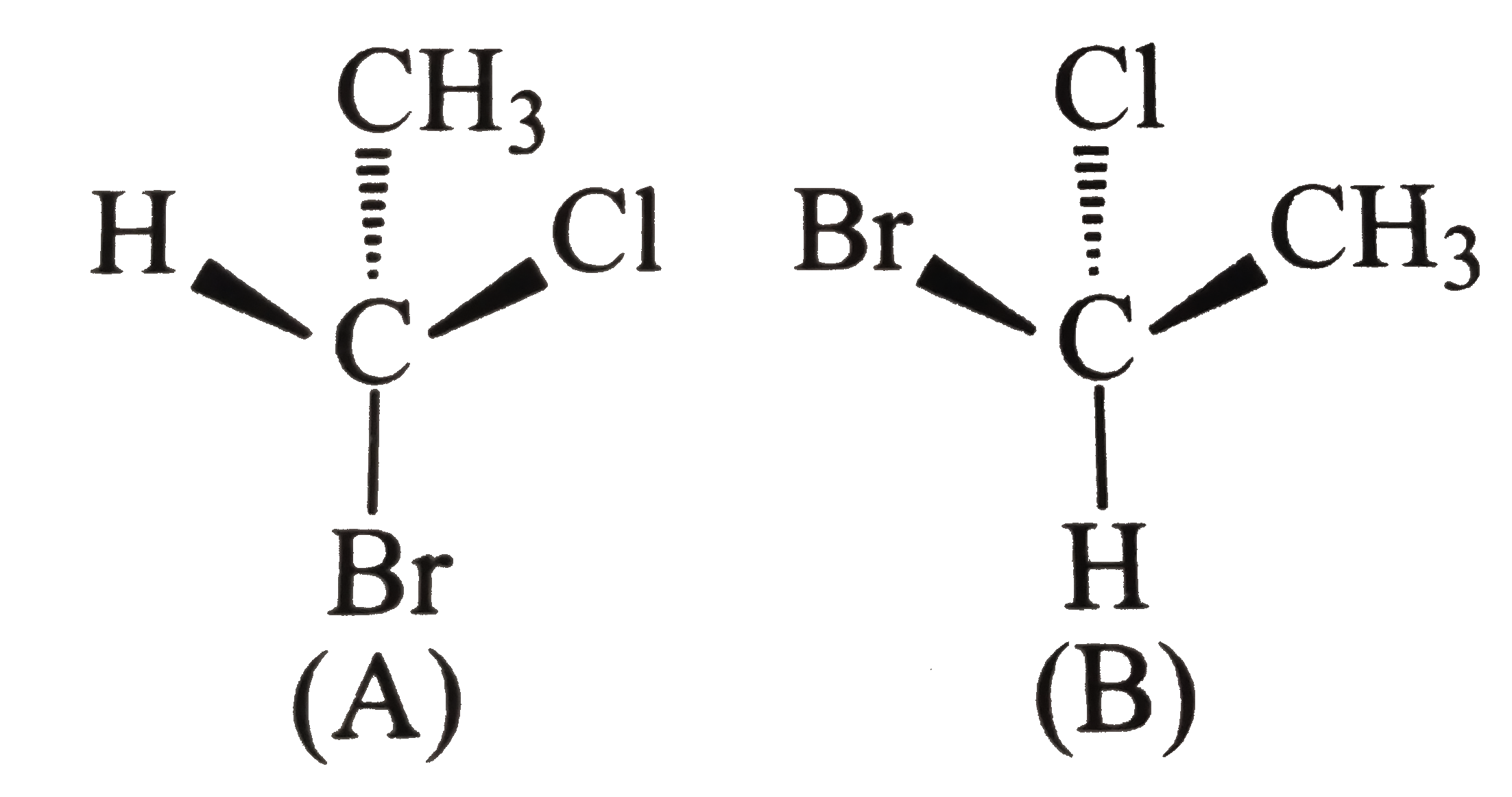 02:37View Solution
02:37View SolutionTell whether the two structrues in each pair represent enantiomers or two molecules of the same compound in different orientions.
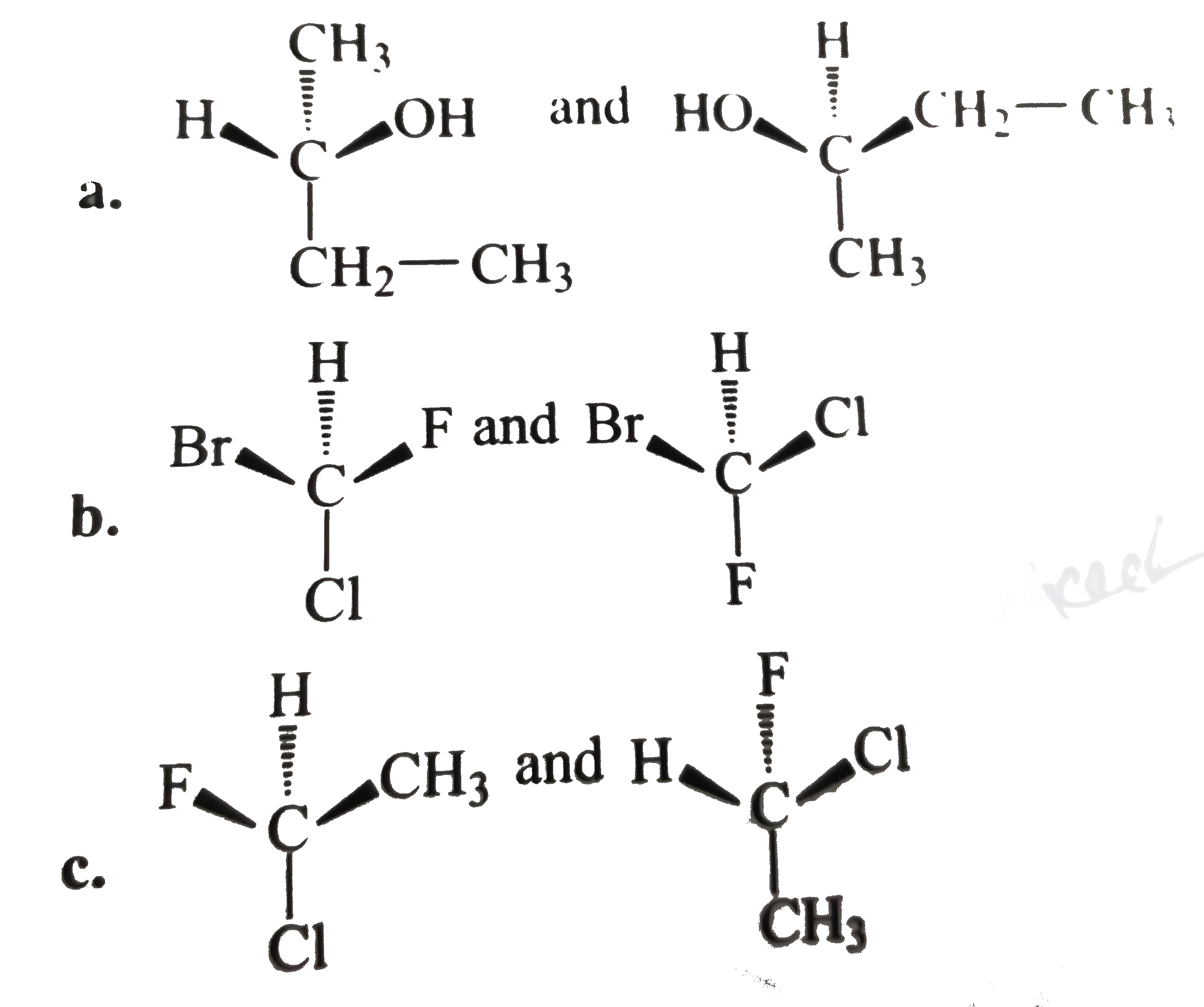 07:07View Solution
07:07View SolutionA sample of optically active alcohol has a specific rotation, `[alpha]_(D)^(25)`, equal to `+1.151^(@)`. Specific rotation for pure form `[alpha]_(D)^(25)` is `+5.756^(@)`.
What is the percentage enantiomeric excess of the sample?02:45View SolutionThe following are the formule for three compounds `2,3-` dichlorobutane written in non-eclipsed confromations. In each instance, tell which compounds are enantiomers and which are meso.
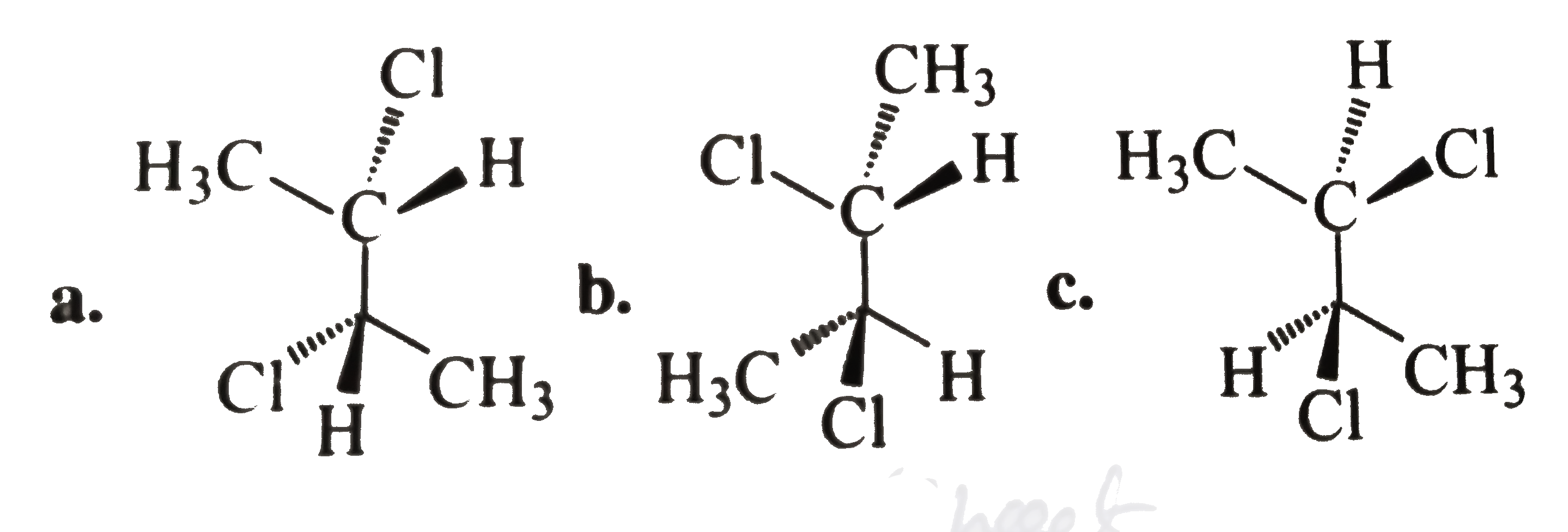 06:46View Solution
06:46View SolutionWrite the three-dimensional formulas for all of the stereoisomers of each of the following compounds. Label pairs of enantiomers and meso compounds.
a. `CH_(3)CHBrCHFCH_(3)`
b. `CH_(3)CHOCH_(2)CHClCH_(3)`
c. `CH_(2)ClCHFCHFCH_(2)Cl` ltbr d. `CH_(3)CHOHCH_(2)CHOHCH_(3)`
e. `CHCHClCHClCH_(3)`09:01View SolutionConsider the following pairs of structrue. Identify the relationship between them by describing them as presenting enantiomers, diastereomers, consitutional isomers, or two molecule of the same compound.

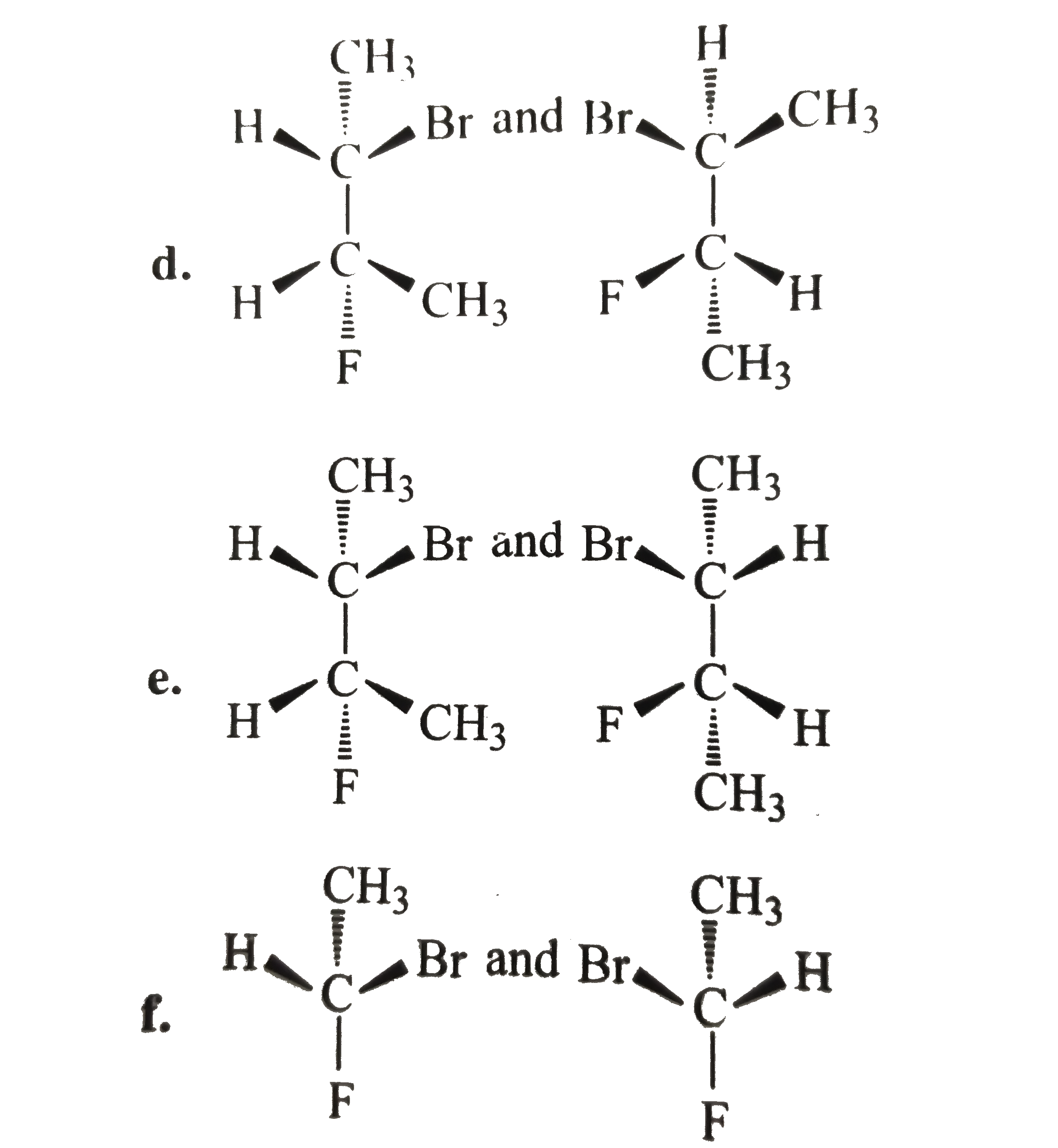
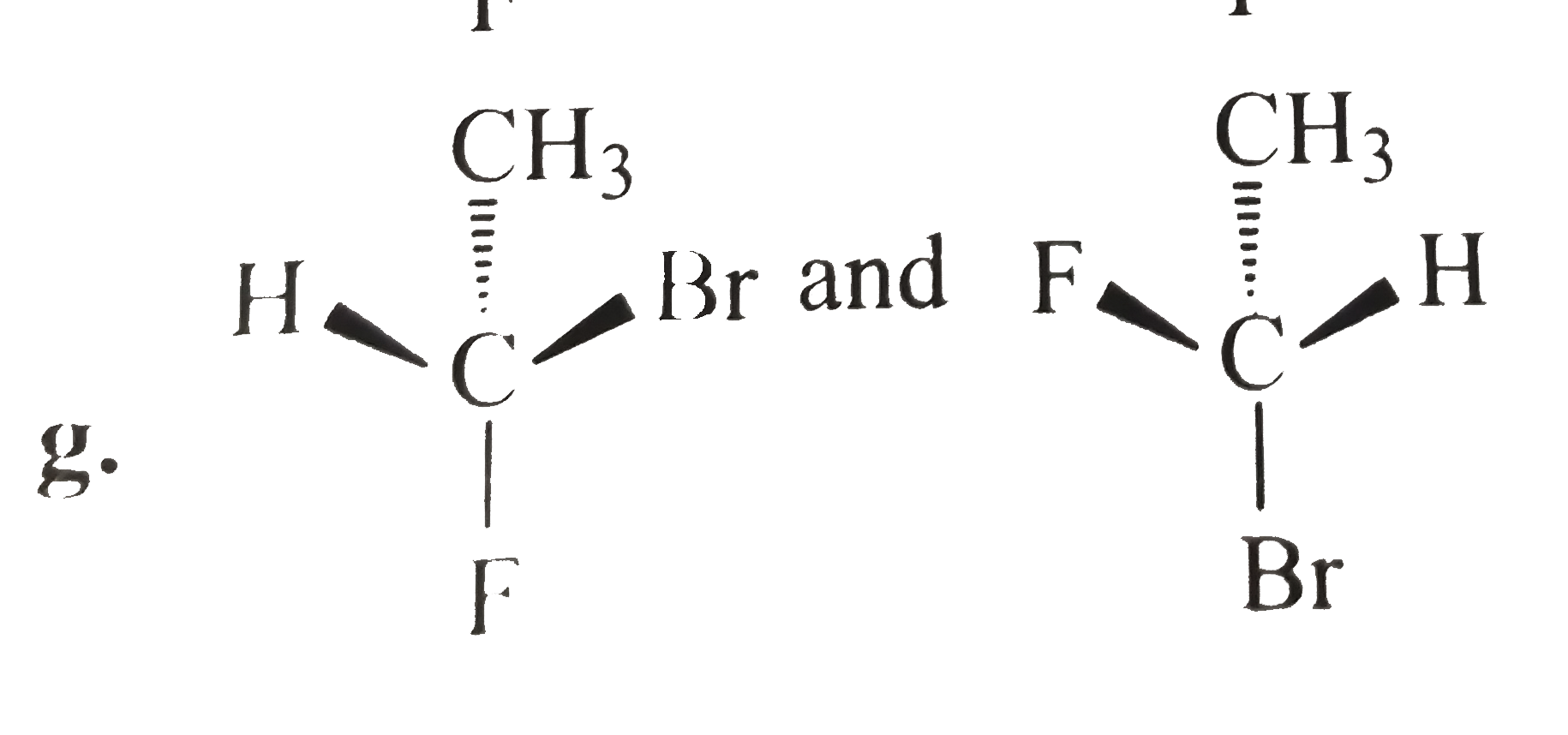
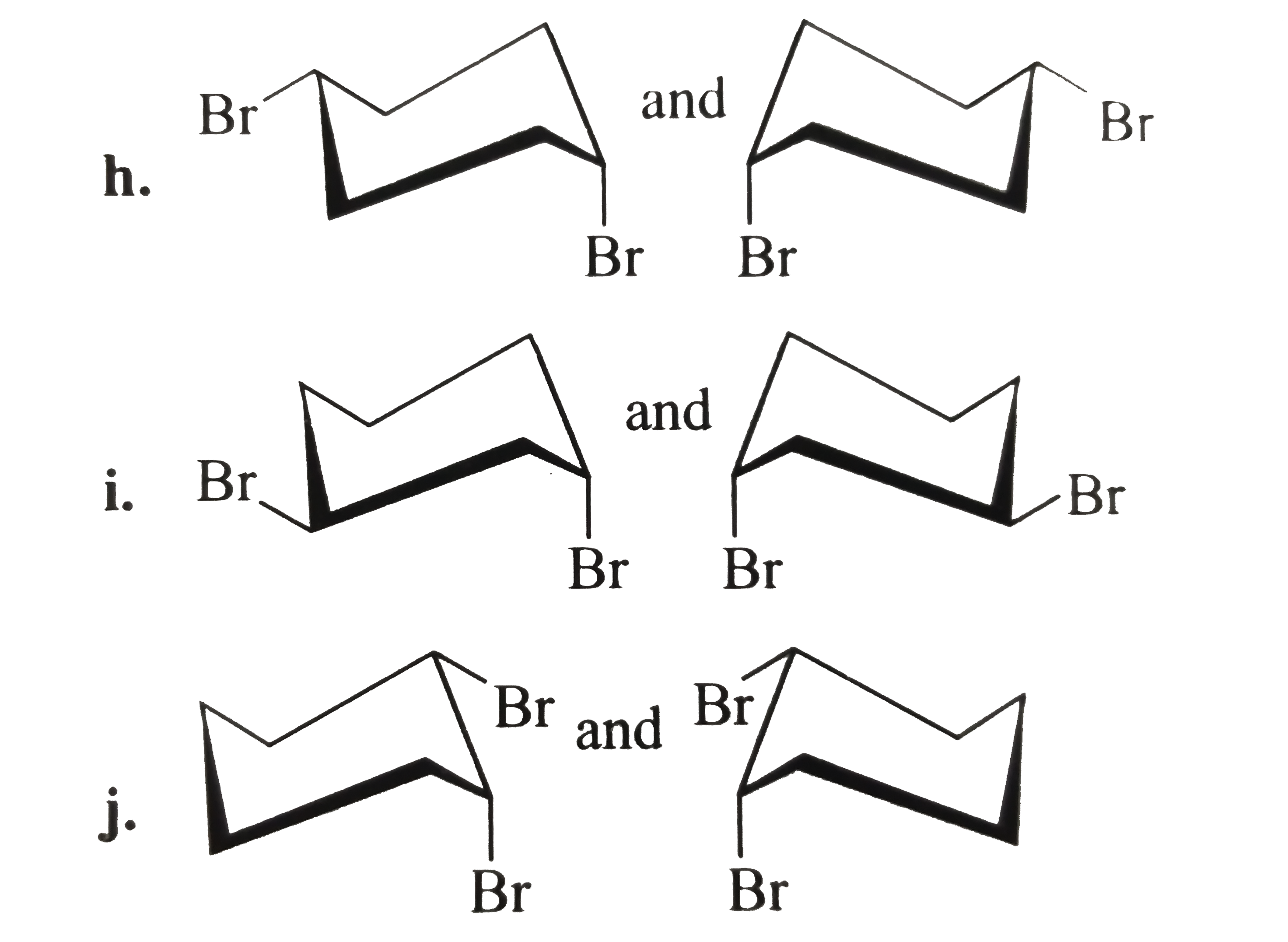
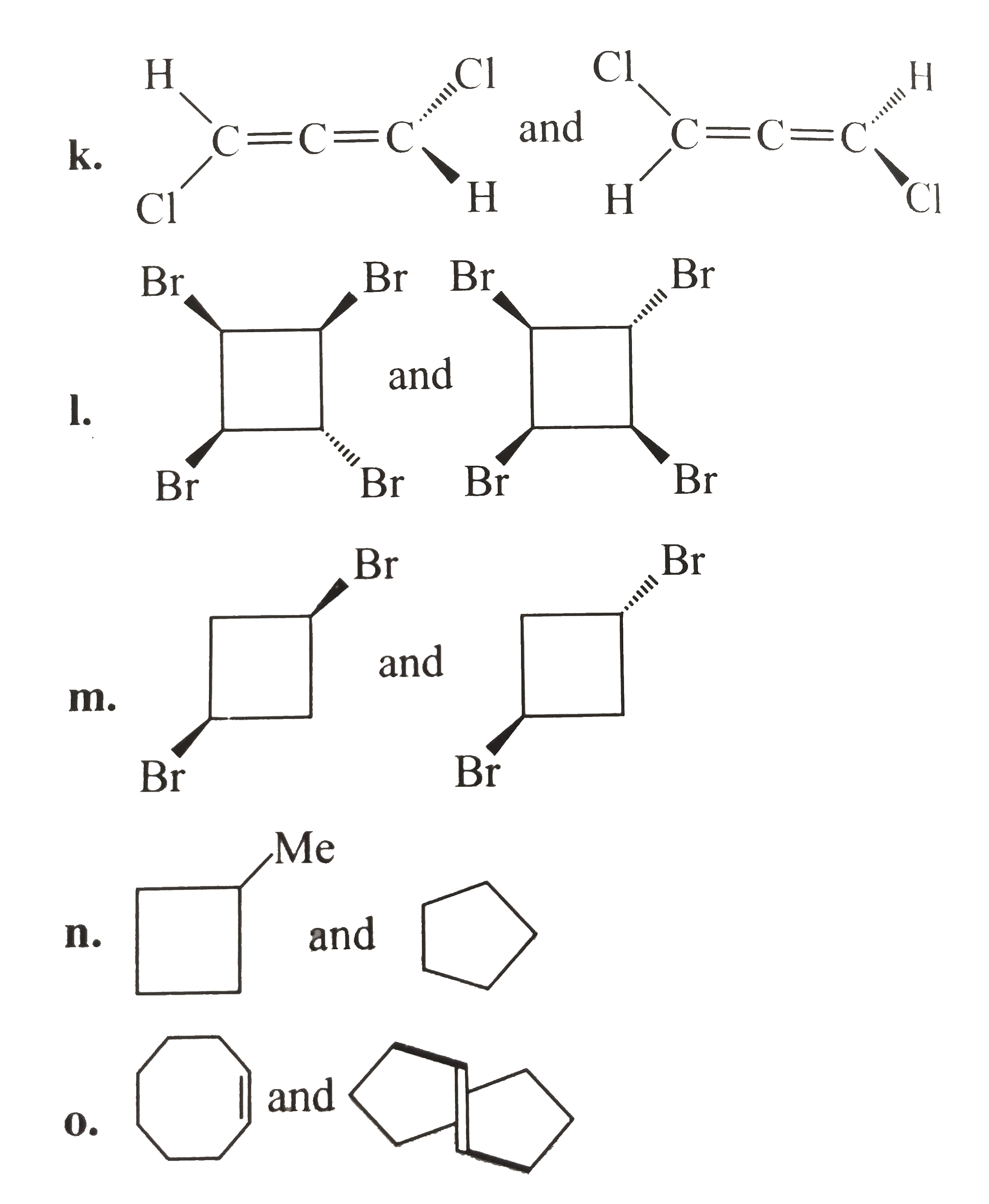
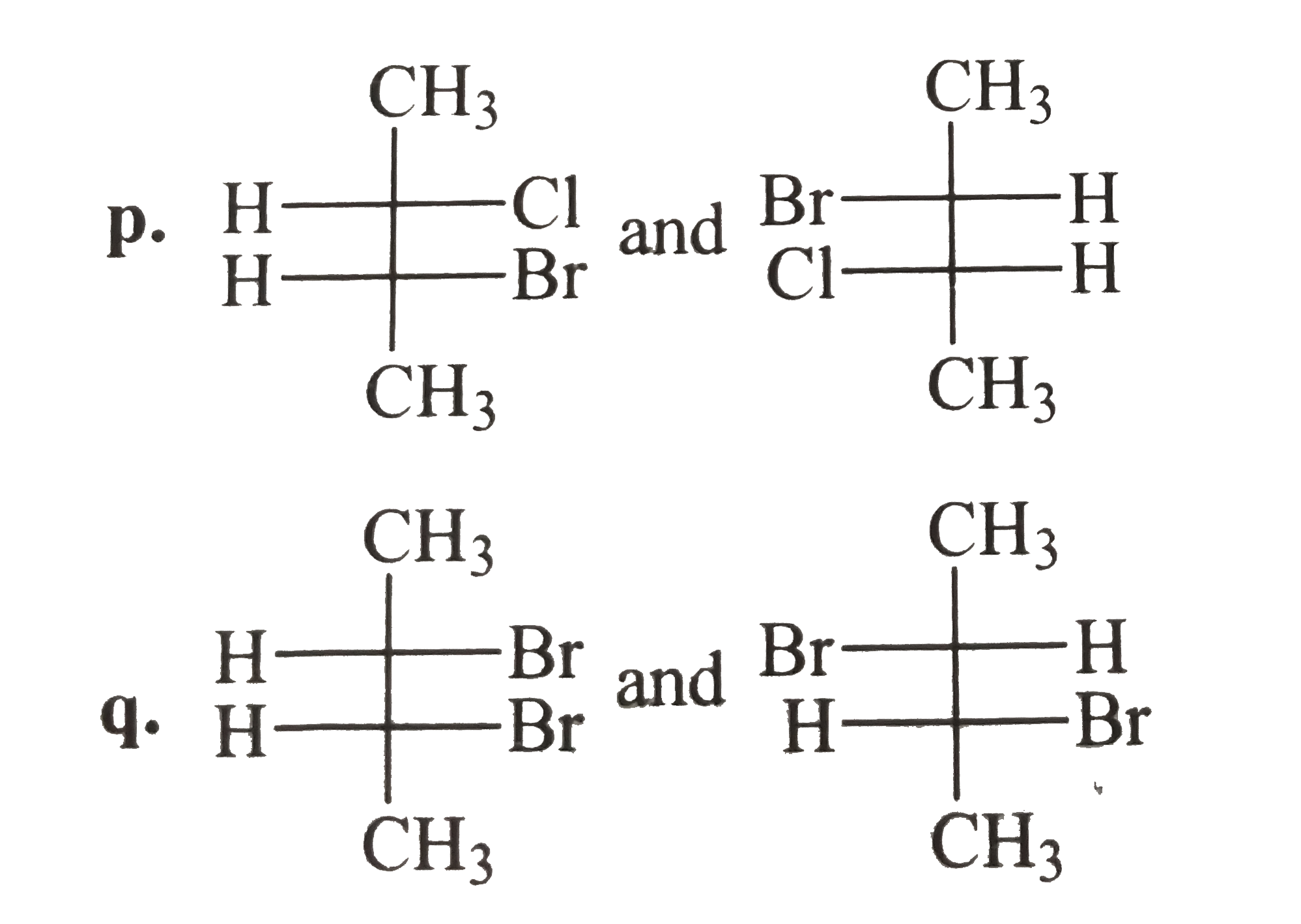 View Solution
View SolutionDiscuss the anticipated stereochemistry of each of the following compounds.
a.`BrCH=C=C=CHBr`
b. `CH_(2)=C=C=CHBr`
c. `BrCH=C=C=CBr_(2)`03:15View SolutionWrite formulae for all the isomers of each of the following. Designate pairs of enantiomers and achiral compounds where they exist.
a. `1`-Bromo-`4`- chlorocyclohexane
b. `1`-Bromo-3-chlorocyclohexane
c. `1`-Bromo-`2`- chlorocyclohexane03:57View SolutionWhich of the following are chiral and capable of existing as enantiomers?
a.`1-3-` Dibromobutane
b. `1,2-`Dichloropropane
c. `1,5-` Dibromopentane
c. `3-` Ethylpentane
e. `2-`Chlorobicyclo `[1.1.0]` butane
f. `2-` Iodobicyclo `[2.2.2]` octane
g. `2-`Bromobicyclo `[2.1.1]` hexane
h.`5-` Bromobicyclo `[2.1.1]` hexane03:33View Solutiona. Write the structure of `2,2-` dibromobicyclo `[2.2.1]` heptane.
b. How many stereocenters does it contain?
c. How many stereoisomers are predicted by the `2^(n)` rule?
d. Only one pair of enantiomers is possible for `2-2`, dibromobicyclo `[2.2.1]` heptane. Explain.04:24View Solution
Exercise questions and complete solutions for chapter ISOMERISM of CENGAGE CHEMISTRY (ENGLISH) of Class 11
All Exercises from CENGAGE CHEMISTRY Class 11 CHEMISTRY ISOMERISM
- (Linked Comprehension Type)Exercise
- Analytical and Descriptive Type (Exercise)
- Assertion-Reasoning Type
- Assertion-Reasoning Type (Exercise)
- Example
- Exercise
- Fill in the blanks (Exercise)
- Illustration
- Multiple choice questions (Exercise)
- Single correct answer type
- Single correct answer type (Exercise)
- True False (Exercise)
